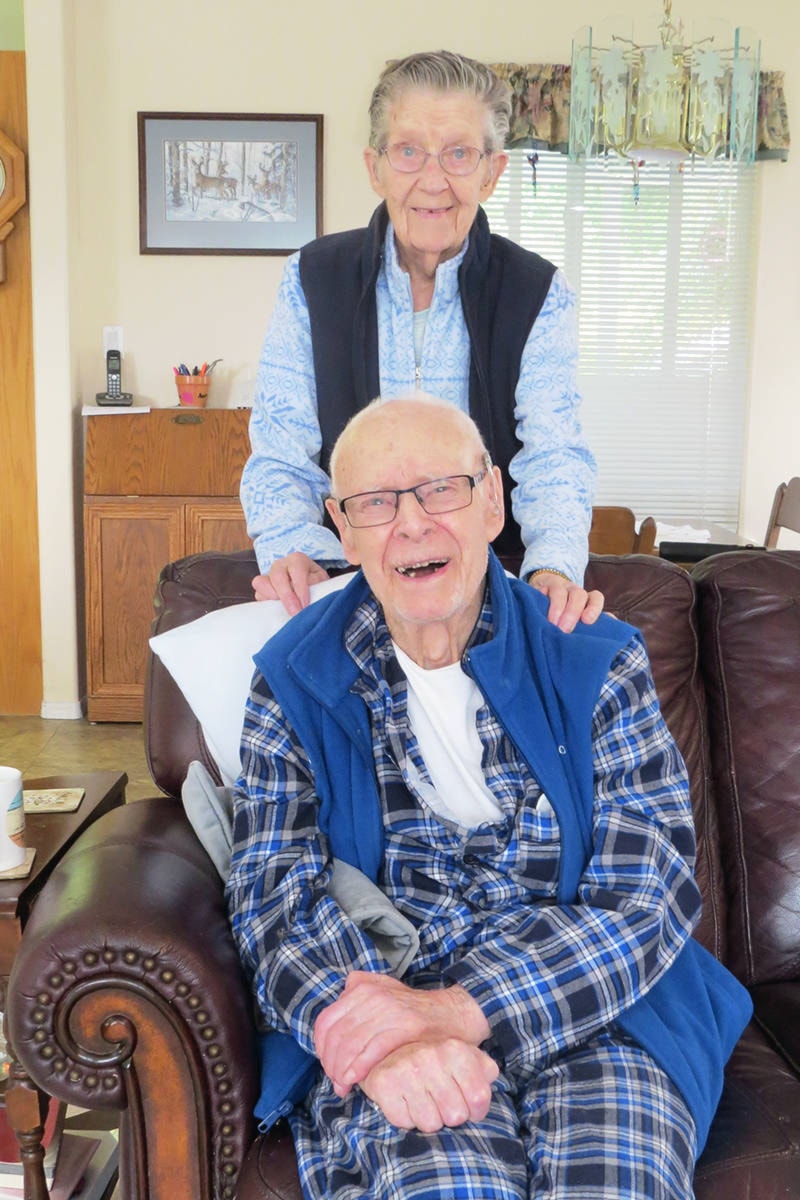Written by Derek Beningfield
In July of 1920, the First World War had been over for less than two years, women under the age of 30 could not vote, the first solo Trans-Atlantic flight was still seven years away and the Royal Navy ruled the waves.
July of 1920 also saw the birth of William Charles Beningfield, who will be turning one hundred years old on July 14, 2020.
To say he has experienced a lot over the course of one century would be an understatement.
Born in London, England, he experienced both the roaring twenties as well as the Great Depression, in which almost everyone in his neighbourhood was put out of work. He was one of the lucky ones however, working as an apprentice furniture refinisher to his father. He witnessed Hitler’s rise to power, and, following Britain and France’s declaration of war on September 3, 1939, two days after Germany’s invasion of Poland, he signed up for the army. He was going through basic training during the evacuation of the British Expeditionary Force from Dunkirk, and was soon in active service.
During the Battle of Britain, he helped to dig trenches in preparation for Operation Sealion, Germany’s planned invasion of Great Britain, and witnessed the Spitfires and Hurricanes of the R.A.F. battling in the skies against the mighty Luftwaffe.
Following the conclusion of the air battle, William Beningfield, assigned to the First Middlesex Regiment, was originally slated to fight against the Germans and Italians in the North Africa desert but fate intervened, and he, along with the rest of the First Middlesex Regiment were instead shipped to Hong Kong in order to bolster its defenses and hopefully ward off a Japanese attack. On December 8, 1941, the Japanese did attack.
William fought against the Japanese as an infantrymen, surviving bullet, mortar bombs, artillery shells and air attacks during the course of the two-and-a-half week long battle, facing impossible odds against a numerically superior enemy. he fought until British and Commonwealth forces, low on food, water and ammunition, were ordered to surrender by the Governor of Hong Kong on December25, 1941.
After the battle and now a PoW., he was shipped to japan aboard the Lisbon Maru, until it was torpedoed by the American submarine the USS Grouper. As the Lisbon Maru was not marked as a PoW ship (in violation of the Geneva Convention) the Americans believed that they were interdicting Japanese shipping and cannot really be blamed for it. The Japanese response was to lock the British PoWs. into their holds as the ship sank but some British soldiers, including William, were able to break free and escape. Most did not.
William survived swimming for three hours through shark infested waters as the Japanese refused to rescue the PoWs who had escaped the doomed ship, machine-gunning them in the water until some Chinese fishing boats were sighted. Only then did the Japanese begin to rescue them. As for William, he made it back to the shore but was eventually recaptures and shipped to Kobe prison camp, where he worked under brutal conditions as a slave labourer. He still has the scars on his body from when he was beaten almost to death for being caught poring into the fuel tanks of Japanese vehicles. Even the brutalities of a Japanese PoW camp could not extinguish his fighting spirit.
He survived American air attacks against the Kobe docks (it was a strategic location and again, the Americans did not know that allied PoWs were stationed there) and in August of 1945 had the Hiroshima atomic cloud go over his head, although he did not know what it was at the time.
He is one of the few people on earth to have survived being bombed by the Germans, the Japanese and the Americans.
He survived the war, although unfortunately, many of his friends did not. Liberated by the Americans following the end of hostilities, who were shocked at the state of the British prisoners, William was shipped off to British Columbia in order to rest and recuperate. Upon arrival, he saw the Lion’s Gate Bridge and told his friend standing next to him at the time that he was going to make this his home one day. In 1948, after marrying his childhood sweetheart Emily (she herself a veteran, serving in the British Army as a radar operator throughout the war), he did make British Columbia his home, settling in Vancouver and later Surrey.
He worked as a furniture refinisher, setting up his own business and with Emily he raised five children; two girls and three boys. William and Emily eventually moved to Eagle Bay, B.C. and then, with age creeping up on them, moved to Quesnel to be closer to their children. He survived a heart surgery in 2007 and is still going strong. In addition, he and Emily will be celebrating their 72nd wedding anniversary this July as well.
In 2018 William Charles Beningfield and his entire family were interviewed by Laurel Films, which is making a documentary about the sinking of the Lisbon Maru. it is scheduled for release later this year.
editor@quesnelobserver.com
Like us on Facebook and follow us on Twitter
